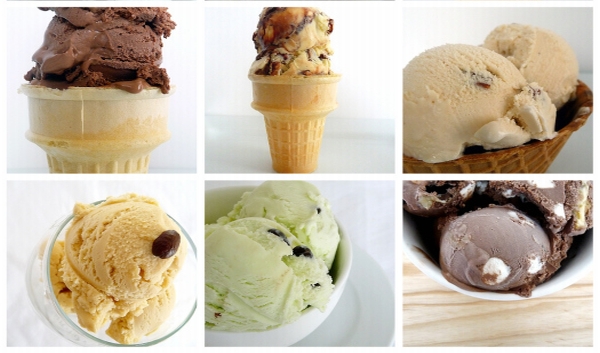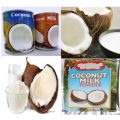Everybody loves ice cream, no matter what the season! Here’s the basic process of making ice cream, and from this you can try developing your own varieties to offer to your target customers.

This project will yield 4 gallons or about 300 scoops of ice cream. You may actually sell this 4-gallon ice cream for children’s parties or small gatherings within your neighborhood.
One thing to note: It’s important to take note of the temperature of the ice cream all throughout the process, particularly during chilling and freezing.
YOU’LL NEED THE FOLLOWING MATERIALS:
Bowls
Casserole
Grater
Large whisk
Measuring spoons and cups
Pocket-type thermometer
Steel paddle
Sieve screen
Stainless steel container
Weighing scale
Wooden bucket
Wooden ladle
INGREDIENTS:
1 kg white sugar
½ kg skimmed milk
½ kg butter milk powder
600 g cassava flour
2 leaves pandan
7 kg table salt
4 egg yolks
2 cans 300-ml condensed milk
1 can 300-g cream
½ bar cheese
1 kg grated coconut
2 tablespoons food color (egg yellow)
3 tablespoons vanilla
7 teaspoons or 34.5ml rhum or brandy
¼ ice block, crushed
FOR THE MANGO MARMALADE FLAVORING:
1 ½ kg ripe mango
½cup white sugar
1 teaspoon calamansi extract
Procedures:
Step 1: Measure all the required ingredients and put them in individual containers.
Step 2: Extract coconut milk from the grated coconut using 4 cups of water. This will be your first extraction–a substance that’s called kakang gata in Filipino. Set it aside. Then, extract more coconut milk from the same grated coconut, this time using 8 cups of water. To remove the coconut bits from it, filter the coconut milk after the extraction. Set the second extraction aside too.
Step 3: Separate the egg yolks from the egg white–we’ll only need the yolks. Beat the egg yolks, then mix them with the second extraction of coconut milk.
Step 4: Slowly add the skimmed milk and the buttermilk powder while mixing with a whisk. Some ice cream makers use either skimmed milk or buttermilk powder, but if you want to make your ice cream a bit more special, you can mix the two powders. You just need to maintain the required 1-to-1 proportion. After blending the mixture, set it aside. (Mixing milk and egg gives rise to custard.)
Step 5: Dissolve the cassava flour in 2 cups of water. Once the cassava flour is completely dissolved, filter it using a sieve or cheesecloth. Also set aside.
Step 6: Prepare the stainless steel container by spreading ¼ kg of white sugar at the bottom, which will help to avoid unnecessary coagulation of the cream. Then put the container inside the wooden bucket.
Step 7: Start the scalding process by boiling a gallon of water containing twisted pandan leaves for 5 minutes. Scalding, which helps dissolve the sugar, infuses the other flavors evenly, and improves the texture. It makes the ice cream creamier and smoother.
Step 8: After boiling the water, take out the pandan leaves and pour the water into the stainless steel container. Also pour in the cassava flour mixture and, using the steel paddle, continuously stir until the sugar dissolves and the mixture achieves a viscous (thick) consistency.
Step 9: Add the kakang gata as you continuously stir the mixture. Also pour in the custard mixture and stir constantly until it attains a paste-like viscosity. Dissolve the food color in a little bit of water, then also add to the mixture. Continue mixing until you achieve the right viscosity.
Step 10.:To chill, cover the stainless steel container and put crushed ice in the wooden bucket. The ice should surround the stainless steel container and be above the level of the mixture inside the container. The chilling stage will only start when the temperature of the mixture reaches 40C to 00C. Chill for 2 hours or overnight.
Step 11: While waiting for the ice cream to be chilled, prepare the mango marmalade flavoring. Put 1 ½ kg minced ripe mango in a casserole together with ½ cup white sugar and a teaspoon of calamansi extract. Simmer in medium to low fire until the mango mixture becomes a thick syrup. Stir the marmalade to avoid scorching. Set aside to cool.
Step 12: After chilling the ice cream overnight, you can now freeze it by putting more ice in the wooden bucket. You need to put the crushed ice and the rock salt alternately. Using the paddle, compact the ice and the salt each time you put in more ice. Compacting lessens the air gaps that cause the ice to melt faster.
During the first freezing stage, the temperature should further drop to -18 0C to -20 0C. While freezing the ice cream, paddle the outer part of the mixture to prevent the frozen mixture from adhering to the sides before it can be stirred. The stirring process allows the cream mixture to expand.
Step 13: While still in the freezing stage, get the steel handbeater and start stirring the ice cream to let it expand. Once it expands to half of the container, mix in the following while continuously stirring the cream mixture: ¾ kg of white sugar together with the grated cheese, mango marmalade, condensed milk, cream, and vanilla.
Step 14: Add crushed ice and salt to the wooden bucket whenever necessary. As you stir the cream mixture, you will notice that the consistency will become thicker and creamier. You will also notice that it is expanding.
Step 15: Once the cream expands up to the brim of the container, add the rhum or brandy. Make sure to stir the mixture down to the bottom to distribute the flavor and the other ingredients evenly. Taste and adjust if necessary.
Step 16: You may now pack the ice cream in small containers like pint containers, small cups, half-gallon or gallon containers, and freeze the cream in these containers. Or, you may simply put the ice cream in the stainless steel container for final freezing.
During the final freezing stage, you need to cover the container tightly and add more crushed ice and salt in the bucket as well as on top of the container. Let it stay for 2 hours or until frozen.
Now your ice cream is ready for consumption. Keep it frozen until it is ready for serving. The shelf life of this ice cream product is 7 to 10 days, depending on the temperature fluctuations. If you can maintain the temperature between -18 0C and -25 0C, the shelf life of the ice cream would be longer and the quality would be better.
Where to train:
GG Productions
10 Greenheights Ave., Greenheights Village, Sucat, Paranaque City
Telephone: (02) 825.6564; 825.6162
Source: Mishell Malabaguio – entrepreneur.com.ph






